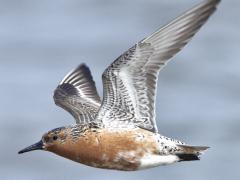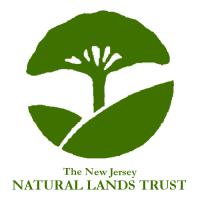Delaware Bay Shorebird Project
The spring migration of shorebirds through Delaware Bay is one of the world’s most magnificent wildlife spectacles – and one of the most imperiled.
 Red Knots and Ruddy Turnstones. Mark Peck
Red Knots and Ruddy Turnstones. Mark Peck
Each spring in Delaware Bay, from about the first week in May to the second week in June, the largest concentration of horseshoe crabs in the world comes onshore to spawn. At the same time, tens of thousands of shorebirds arrive at the Bay, thin and spent from what has been a non-stop, four-day flight from South America. They are en route on a remarkable roundtrip journey from southern wintering grounds to Arctic breeding territory, and Delaware Bay is their most critical stopover on this 8,000-mile trip. The shorebirds need to quickly double their weight to complete their migration north and breed successfully. To refuel at such capacities and in only a ten-day window, high-energy horseshoe crab eggs provide essential nourishment.
 Zoom+ Red knot in full breeding plumage on Delaware Bay. © Jan van de Kam
Zoom+ Red knot in full breeding plumage on Delaware Bay. © Jan van de Kam
But since the early 1990s, there have been major declines in both the number of adult horseshoe crabs and their eggs. The cause is an exploding crab harvest that grew from only tens of thousands in 1990 to over 2 million in 1996. With the decline of their critical food source, shorebird numbers also plummeted. Today, the shorebirds’ annual arrival in Delaware Bay is a mere shadow of what it once was. With more than 80% losses in some shorebird population numbers, certain species – like the Red Knot – are now teetering on the brink of extinction.
Conserve Wildlife Foundation of New Jersey and the Endangered and Nongame Species Program (ENSP) of the New Jersey Department of Environmental Protection’s Division of Fish & Wildlife have partnered for 20 years, working to conduct research on Delaware Bay shorebirds in order to prevent their decline. Each year, Larry Niles, Stephanie Feigin and ENSP’s Amanda Dey lead a team of shorebird experts from around the world – from countries as far as Argentina and New Zealand – to conduct research on shorebirds during their stopover. These experts also follow shorebirds to other locations along their migration, including South America and the Arctic. With scientific research and concerted conservation efforts, our hopes are that someday Delaware Bay’s skies will be once again filled with shorebirds.
- Learn more about the 2016 Delaware Bay Shorebird Project Banding Season on our blog!
- Read our posts from the 2015 Delaware Bay Shorebird Project.
 | Shorebird Project Key SpeciesLearn more about New Jersey's shorebirds as well as the horseshoe crabs which play a critical role in their survival. |
 | Shorebird ResearchVarious methods are used to study shorebirds in New Jersey and along their migration route. |
 | Shorebird ConservationShorebird conservation relies upon protection of shorebirds themselves as well as protection of their prey and habitat. |
 | Shorebird MediaPhotos, videos, news, publications, and other resources about migratory shorebirds on Delaware Bay. |
 | How You Can Help ShorebirdsThere are several ways in which you can help New Jersey's shorebirds - donate, volunteer, or purchase a Conserve Wildlife license plate! |
Where to See Shorebirds
Find Related Info: Red Knot, Shorebirds








